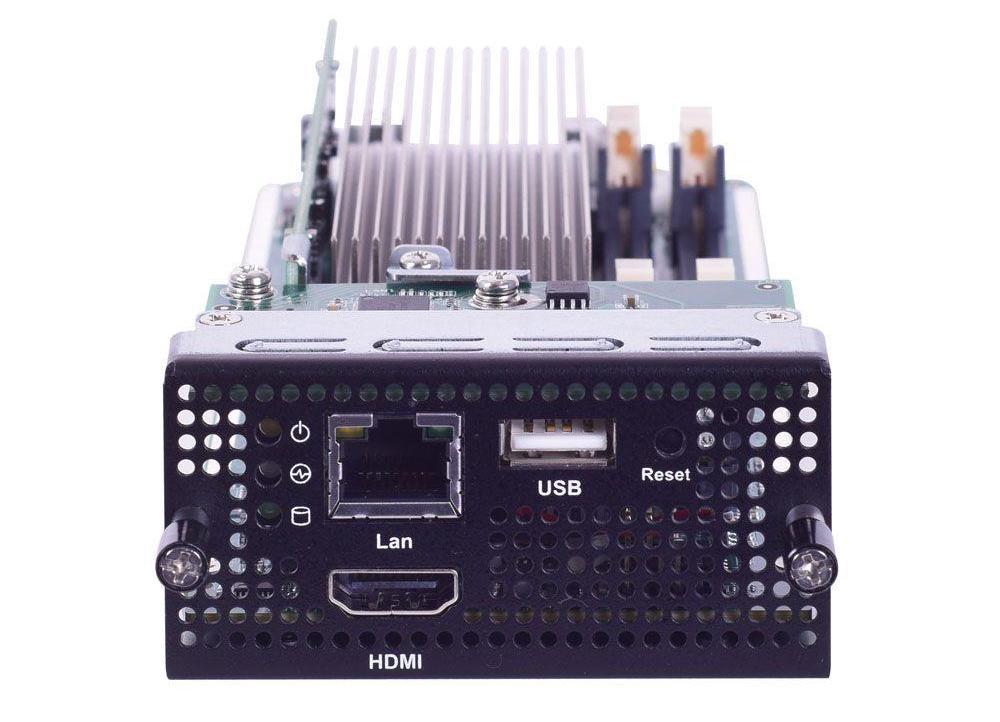Get Ready for Scalable Video Streaming with the H.265 Codec
For the past 14 years, the H.264 video compression standard has been used to provide fast, ubiquitous, and cheap video encoding in content delivery networks (CDNs) across the globe.
But H.264 is inefficient at compressing video by modern standards. It struggles to render high-quality images, and also doesn't support resolutions over 4K. All of these limitations are problematic in the age of ultra-high-definition (UHD) video streaming.
In response, CDN operators are transitioning to H.265, or the High Efficiency Video Codec (HEVC). HEVC provides a 50 percent improvement in file compression over its predecessor while delivering the same image quality. And it supports 8K resolutions.
But there is a cost. HEVC's performance and efficiency come with a need for more advanced CDN hardware. These appliances must be optimized for high-volume video streaming but can't compromise on other tasks such as packet forwarding. In addition, there is a need to add these capabilities without revamping the entire CDN infrastructure.
Fortunately, drop-in network interface cards (NICs) based on Intel® Xeon® processors can handle HEVC using hardware accelerators and features like Intel® Iris Pro Graphics GT4e. As a result, CDN operators now have the bandwidth to scale into the age of streaming video.
Why HEVC?
According to the recent Ericsson Mobility Report, video will comprise three-fourths of total mobile data traffic by 2023. This is being driven by growth in over-the-top (OTT) services, as consumers now stream UHD video content via the Internet on devices such as smartphones, laptops, and connected media players. As a result, significant stress is being placed on the CDNs that distribute rich media to end users.
A main reason the H.264 standard struggles with these workloads is a technique it uses called macro-blocking. Macro-blocking allows 4×4- or 16×16-pixel matrices to be processed quickly but also yields blocky image artifacts. This is especially true at low bitrates.
HEVC, on the other hand, replaces the macro-blocking method used in H.264 with coding tree units (CTUs). CTUs process blocks of 16×16-, 32×32-, or 64×64-pixel image or video data, always capturing the largest coding unit (LCU) available. This makes the encoding process more efficient, and allows CTUs to partition images into variable sizes for better image quality at lower bitrates.
As mentioned, the use of CTUs contributes to HEVC's 50 percent compression improvement (Figure 1). But the real advantage for CDNs is that the smaller file sizes result in significantly lower bandwidth and storage requirements. The network can therefore support more UHD video streams at any given time.

Hardware Acceleration Optimizes HEVC Encoding, Decoding, and Transcoding Workloads
While HEVC offers better, more efficient video compression, it also requires CDN equipment capable of handling diverse encoding, decoding, and transcoding workloads. This is a common challenge for network engineers, as CDN hardware must be able to process these advanced codec operations while also performing tasks like packet processing.
The Intel® Xeon® processor E3-1515 v5 offers a path forward for network engineers looking to scale the performance of CDN appliances. Xeon® processors E3-1515 v5 incorporate a suite of features dedicated to HEVC workloads, including:
- Support for up to eight simultaneous 1080p HEVC streams at 30 frames per second (fps), two 4K HEVC streams at 30 fps, or up to 18 H.264 streams
- A full fixed-function accelerator for 8-bit encode and decode operations
- A 10-bit accelerator for decoding hybrid and partial HEVC operations
In addition, an integrated Iris® Pro graphics engine in E3-1515 v5 processors includes 72 execution units and a 128 MB eDRAM cache. This translates into a 26 percent improvement in graphics performance over previous-generation Intel Xeon processors, and also enables real-time encoding of HEVC video streams.
For decoding tasks, the P580 graphics processing unit (GPU) features Intel® Clear Video and Intel® Clear Video HD Technology that can be used to offload decompression algorithms onto a dedicated hardware IP core.
Transcoding is another key function of CDN appliances, as platforms will encounter video formats ranging from HEVC and H.264 to JPEG and VP9. High-speed video transcoding operations on the E3-1515 v5 are performed by Intel® Quick Sync Video media accelerators integrated into the processor. Quick Sync Video handles not only compression of these files, but facilitates video streaming as well.
By offloading the various workloads associated with HEVC into specialized hardware blocks, processors like the Intel Xeon processor E3-1515 v5 are able to maximize the efficiency provided by the codec itself.
In addition, running these tasks in dedicated hardware blocks such as Intel Clear Video and Intel Quick Sync Video delivers much more power-efficient processing than would be possible on a traditional CPU.
Drop-in Designs for HEVC
Given the bandwidth, storage, and quality improvements of HEVC, many CDN operators are looking to take advantage of the codec today. Fortunately, drop-in network interface cards (NICs) based on the Intel Xeon processor E3-1515 v5 are available from OEMs like Lanner Electronics, which recently released the NCS2-VT02A 4K video transport module (Figure 2).

The NCS2-VT02A supports HEVC compression, and features 16 GB of on-board DDR4 memory to minimize latencies associated with high-volume encode/decode/transcode operations. Because these functions can be performed on the Xeon processor E3-1515 v5's integrated Iris Pro graphics unit and other associated hardware blocks, the main processor can carry out tasks like packet forwarding without being burdened by the codec.
The NCS2-VT02A is outfitted with a wide range of I/O ports, including 10 GbE coax, fiber, and RJ-45, so it can be easily added to rackmount network appliances. When deployed in Lanner's NCA-5510 1U system, for example, the NCS2-VT02A is capable of compressing video channels from up to 80 IP cameras, simultaneously (Figure 3).
Onward to 8K
Next-generation codecs are crucial for broadcast and CDN providers, especially if they hope to deliver 3D video and 8K resolutions in the future. As the demand for high-quality video increases, HEVC will play a key role in minimizing bandwidth and storage requirements while also delivering the best user experience.
The good news is that with flexible network appliances based on Intel Xeon processors, operators can start upgrading their infrastructure for tomorrow, today.